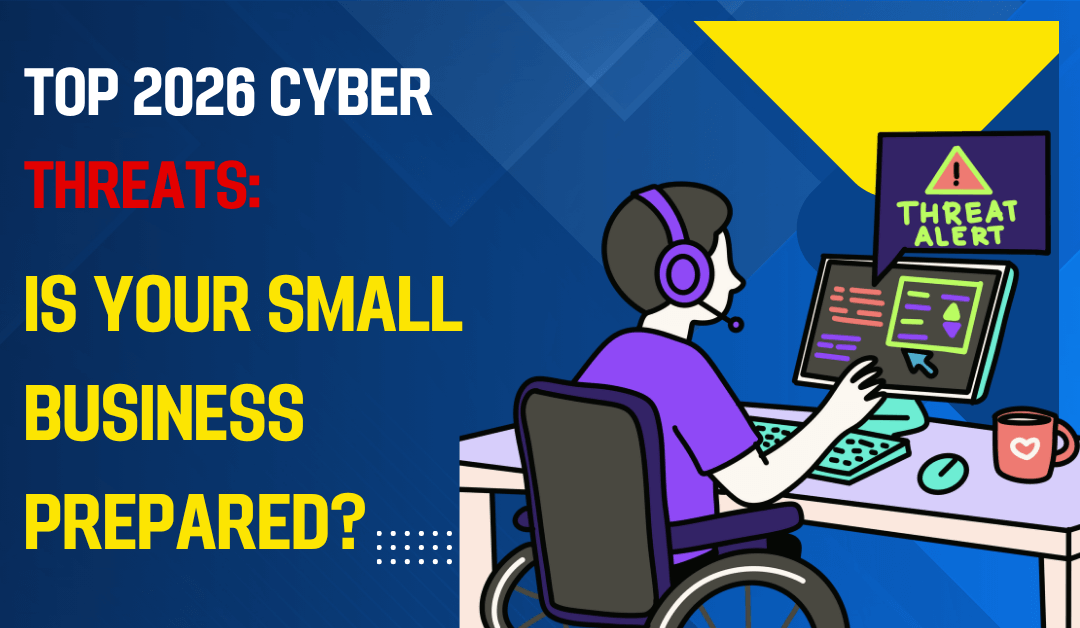For small businesses, staying ahead of online threats is a constant challenge. As technology gets smarter, so do cybercriminals. The approaching 2026 Cyber Threats are more sophisticated than ever, requiring a proactive defense to protect your business.
Let’s break down the most significant threats on the horizon with real-world examples, so you can see how they might affect your business and learn how to fight back effectively.
Unpacking the Top 2026 Cyber Threats for SMBs
To protect your company, you need to know what you’re up against. The game has changed from generic viruses to highly targeted attacks. Understanding these emerging 2026 Cyber Threats is the first step to building a strong defense.
1. AI-Powered Phishing and Deepfake Scams
Old-school phishing emails with typos are dead. New AI tools can create perfectly crafted, personal messages to trick your employees.
- Example: You receive a voicemail that sounds exactly like your top client, urgently asking you to send their upcoming payment to a new bank account number. This “deepfake” voice is AI-generated, designed to steal your money.
2. Advanced Ransomware-as-a-Service (RaaS)
Ransomware isn’t just about locking your files anymore. Criminals now use a “triple extortion” method to maximize pressure.
- Example: A hacker encrypts all your customer data. Then, they threaten to publish it online. At the same time, they launch an attack that crashes your website, making it impossible for customers to reach you—all until a ransom is paid.
3. Exploitation of Internet of Things (IoT) Devices
Every smart device in your office is a potential backdoor to your network, often because they have weak, default security settings.
- Example: A hacker gains access to your office’s smart security camera using its factory-default password. From there, they “jump” from the camera’s network connection into your main server, giving them access to your financial records and employee information.
4. Weaponized Supply Chain Attacks
Why attack one small business when you can attack thousands at once by targeting the software they all use? This is one of the most dangerous 2026 Cyber Threats.
- Example: Your business uses a popular online tool for project management. Hackers breach that tool’s company and hide malicious code in the next “software update.” When you install the update, you unknowingly give them a key to your entire system.
How to Prepare Your Business Now
Knowing the threats is the first step. Here’s how you can act now to build your defense.
- Embrace Zero-Trust: Trust no device or user by default. Always verify and authenticate anyone trying to access company data, even if they’re on the office Wi-Fi.
- Train Your Team Continuously: Your employees are your first line of defense. Run regular training sessions to teach them how to spot these advanced phishing and deepfake scams.
- Mandate Multi-Factor Authentication (MFA): A password can be stolen, but MFA adds a crucial second step, like a code sent to a phone. Use it for every single business account.
- Create an Incident Response Plan: Know exactly what to do when a breach happens. Who do you call? How do you notify customers? A clear plan saves time, money, and your reputation.
Conclusion: Act Now for a Secure Future
The sophistication of 2026 Cyber Threats means we can no longer be reactive. By treating cybersecurity as a core business function and taking proactive steps today, you can protect your company from the damaging and costly attacks of tomorrow.

